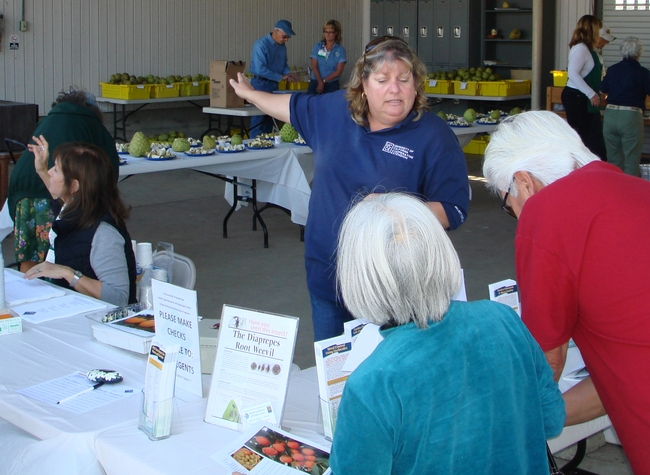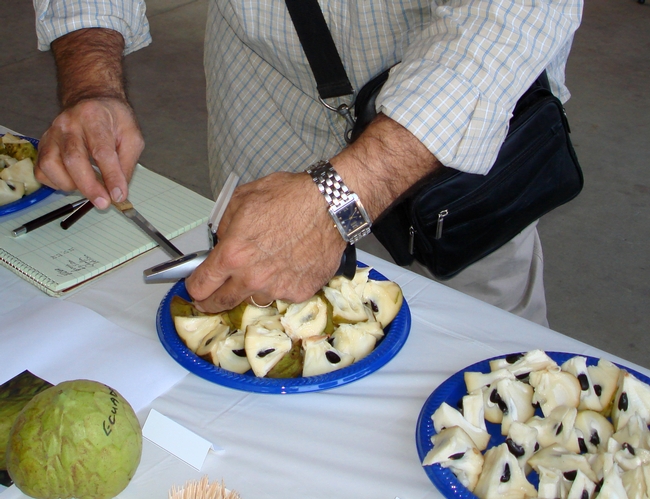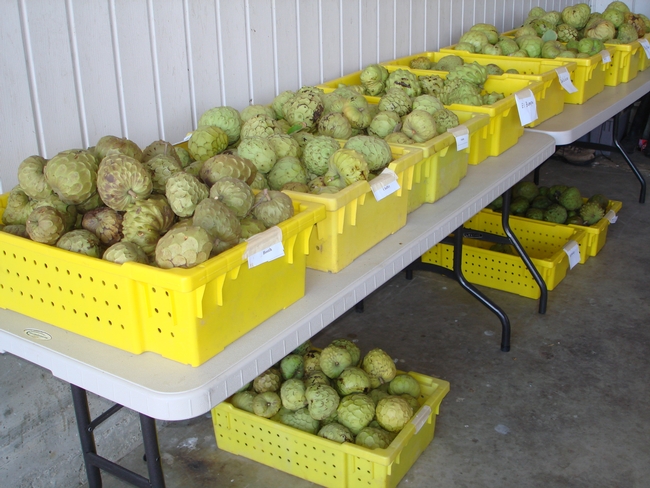Ever tasted a cherimoya?
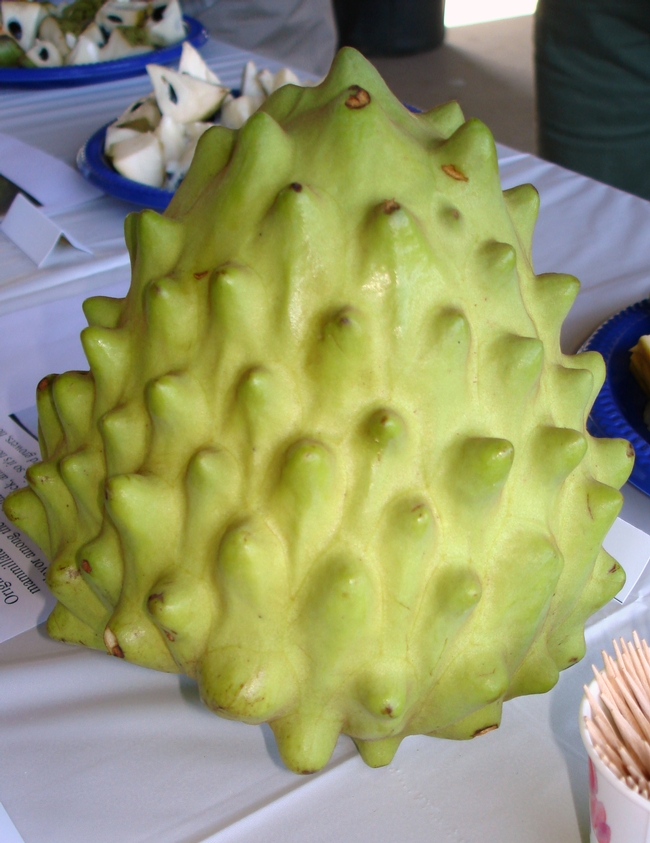
“I say it tastes like heaven. The cherimoya tastes like cherimoya. It’s creamy. It’s incredible. Nothing tastes like it,” she said.
On Saturday, she helped organize a tasting of 15 varieties of cherimoya at the UC South Coast Research and Extension Center. About 120 local residents, UC Master Gardeners and members of California Rare Fruit Growers attended. Though “heaven” wasn’t an option, participants were given a scale of 1 to 5 to rate the cherimoya varieties based on exterior attractiveness, texture, flavor and overall quality.
Tammy Majcherek, who works at UC South Coast Research and Extension Center and was in charge of the tasting event, explained that the evaluations will help gardeners and homeowners better know how different varieties grow locally, before they consider planting their own.
The center has small orchards of both cherimoya and persimmon that aren’t being used for research projects, but staff members want to continue maintaining the trees and share them with the public, one way or another.
“Because of budget cuts, we've been trying to figure out ways to keep these collections going or to re-propagate some of the best," Majcherek said. "One of the things that we’re in the midst of planning is an urban horticulture extension project with a demonstration orchard, where the public can come and see the various types of trees that they could grow in this area."
Of the 100 or so cherimoya trees currently planted at the center, the best varieties would be included in the public demonstration orchard – and the results of the taste testing will eventually help staff members select which trees to plant.
The 15 varieties at the tasting were Big Sister, Booth, Chaffey, Deliciosa, Ecuador, El Bumpo, Fino de Jete, Ludica, Nata, Orton, Oxhart, Pierce, Santa Rosa, Selma and Whaley.
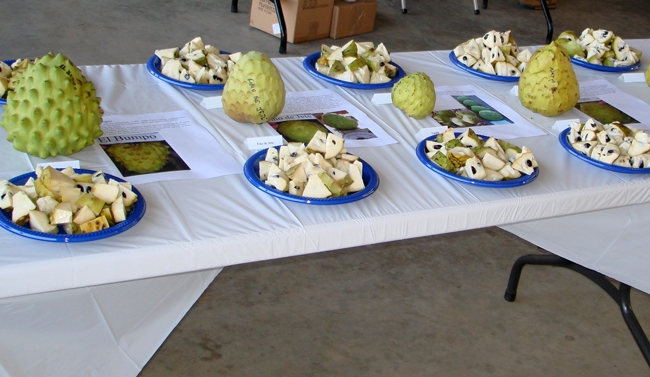
“I really love the Big Sister variety because the tree is kind of small and is a heavy producer,” she said. “We had a fruit from Big Sister that was the size of my whole head.”
She said that El Bumpo also produces large fruits. The varieties Fino de Jete and Nata can have excellent flavor, and this year Pierce fruits likely had the highest brix, signifying high sugar levels.
Behind the scenes, preparations for the event included harvesting the fruit more than a week ahead of time so that it would ripen.
“We picked 15 varieties the week before, and it was very stressful. Every day I was there wondering, are they going to be ripe? Are they going to be perfect for Saturday? What if they're too hard? What if they're too soft?” Barkman said. “When the cherimoya ripens, you have about two days to eat it because it will go bad really, really quickly.”
Fortunately the fruit were ripe for Saturday’s event, and extra fruit were available for participants to take home to ripen and share.
Majcherek explained this was the first time the center has organized a tasting event for the cherimoya. She was surprised that so many of the participants already knew about the fruit.
“I think they were mostly coming to the tasting just for the love of cherimoya,” she said. “I had no idea that there was such an interest.”
She plans to hold another tasting event for cherimoya next year, as well as a second tasting event for persimmons in the fall.
For more information, UC Cooperative Extension Ventura County has a page about growing cherimoya commercially and the UC Davis Postharvest Technology Center has recommendations for maintaining postharvest quality of cherimoyas too.
Information about future tastings will be posted to the UC South Coast Research and Extension Center website.
